

Here are some notes that take you behind the scenes...
where you can explore some of the secrets hidden in these "seemingly simple" music videos...
Just in case you are the curious type, like I am.

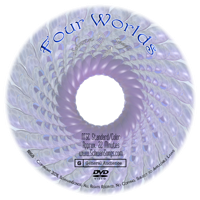
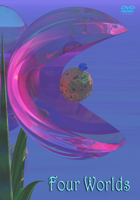
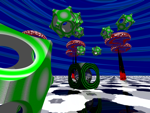

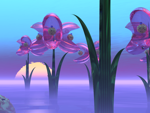

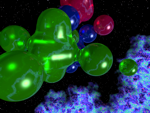
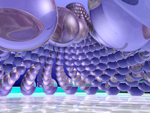

-
✦Why the title "Four Worlds"? The obvious primary meaning that there are four different music videos, depicting four very different curiously dreamy worlds. The underlying secondary reference is to M.C. Escher, and one of my favorite pieces of his artwork, which is entitled "3 Worlds." There's an unintentional-but-interesting tertiary spiritual reference here.
-
✦Each of these pieces of music was written first, then much later I envisioned an animated world to go with each piece of music, and turned them into music videos.
-
✦If you load the DVD onto your computer as a data-disc, there is a directory on it with a number of high-resolution image files (.PNG) which you can copy and use for background computer-wallpaper if you like.
-
✦The music was written out note by note as sheet music.
-
✦The computer animations are designed, object by object, texture by texture, in a computer language in a text editor, instead of using graphic modeling software.
-
✦Each piece of music has been revised, enhanced and re-mastered specifically for this DVD.
-
✦Each of the computer animations has been re-rendered in high-quality DVD size/format/aspect as well.

-
✦This video is poking fun at the seemingly random and arbitrary things that often happen inside a computer game, for example, "if you use the other weapon, and shoot while you are inside the kaleidoscope, then you can get to the next level."
-
✦I've always wanted to glide through a kaleidoscope, haven't you?
-
✦The idea of sneaking a sheep into the video was my wife's idea, and before I knew it, there were ten of them hiding all over the place. This gives you a reason to watch the video again a little more closely.
-
✦To "Game the System" is a colloquial term, meaning to use rules that are set in place to protect a system to subvert it and use it for your own purposes.
-
✦Did you notice that the floor tiles start out as regular hexagons, but quickly get scrunched as the game gets "assembled" in the beginning?
-
✦There is a 3-second segment of this video, inside the six-sided kaleidoscope, that has so many complex reflections inside it, that the animation software on my computer slowed down and could only generate one frame every 8 hours while it was building the movie!
-
✦When first learning how to move around in a computer game, one often goes drifting off, bumping into things before getting comfortable changing directions. "Help, I don't know how to turn, I'm going to run into that giant arch thing, WATCH OUT!" ... this was the "newbie" feeling I was trying to capture at the very beginning of the video.
-
✦The music that accompanies this video is called "Fractal Serenity", and started life as a short computer-generated piece of "fractal" music, which I then heavily re-worked, extended, re-orchestrated and embellished into the strangely smooth-yet-angular piece it is now.
-
✦The golden "seeds" inside the cherry orchids exude a drop of nectar-oil (if you look carefully, you can see a kind of oil-slick rainbow, called "newtonian interference patterns" on the droplet.)
-
✦If you tell the computer to draw a circle for the sun, it will just be a perfect circle, and it will look "wrong" at sunset. So I added hazy atmosphere to give the sun that slow shimmery shape as it sets.
-
✦The title is a play on words on a play (of too many words) by Chekhov, called "The Cherry Orchard."
-
✦The "beeps" at the beginning, middle and end of the piece are morse code for "CQ." This is the call sent by Ham radio operators when they want to see if anyone is out there they can talk to... "Hello? Is anybody out there?"
-
✦I not only added the random splash of stars, but also a very regular grid of "relay stations" that slowly pulsate with color too.
-
✦The subtitle of the video, [NCQ 180], was chosen because it closely resembles the astronomy classification system, whose objects start with the "New General Catalog" prefix "NGC" and then some number. I simply inserted the "CQ" in there instead, and added the number 180, because "180 degrees" implies "turning around to come back."
-
✦Water molecules, when they freeze, actually expand slightly into a crystal lattice structure. I took the idea and invented a liquid that when it slowly freezes, it expands and twists into a crystal tower structure instead. And as the temperature inevitably rises again, entropy takes over and it melts back into a puddle.
-
✦When I originally wrote the music, I called it "Icy Sharp", because it had a chilly feel to it, and it was written in the key of C sharp.
-
✦I wanted the initial scenes of the video to be beautifully symmetrical, but unrecognizable. Then as you progress through the video, you begin to see the overall structure.
-
✦If you watch carefully, each little crystal droplet is very slowly spinning on its own axis, which adds to the slow morphing of the symmetric patterns.





